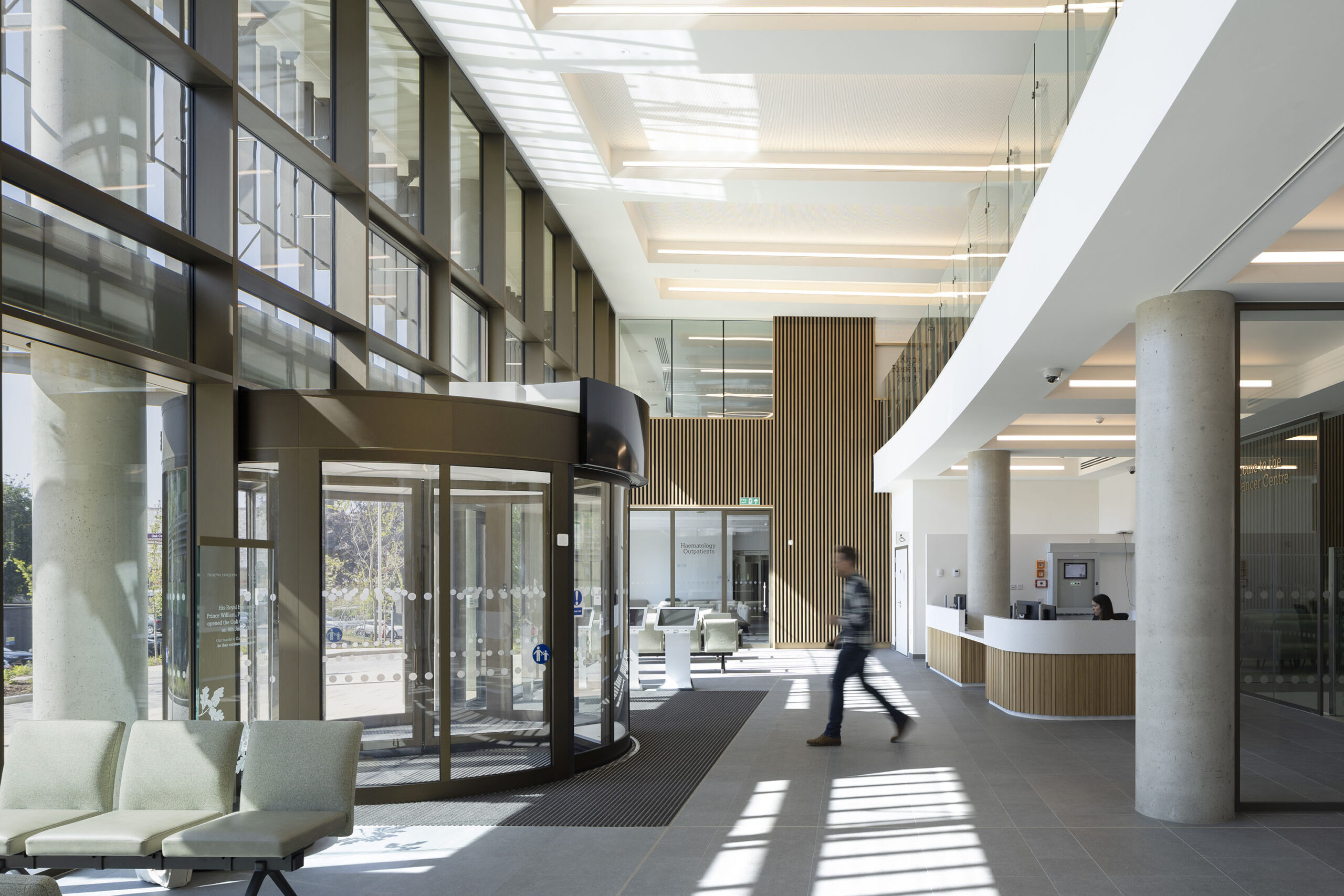The benefits of using Automatic Doors in Healthcare

Automatic doors provide numerous benefits when refurbishing existing healthcare buildings or designing new ones, they offer several advantages that enhance patient care, improve operational efficiency, and prioritize safety to staff and visitors. In this article, we will explore five key advantages of using automatic doors in healthcare settings:
Enhanced Accessibility: Automatic doors will enhance accessibility for all patients, staff, and visitors, particularly vulnerable users or those with mobility challenges, such as those using wheelchairs, crutches, or walking aids. Designed to open and close automatically, they eliminate the need for physical effort to operate them as well as being fitted with safety devices that will help prevent accidents. Any space fitted with automatic doors will ensure that all users can enter and exit the building with ease, promoting inclusivity and eliminating barriers.
Infection Control: Maintaining a clean and hygienic environment is crucial in healthcare settings, where the risk of infection transmission is high. Automatic doors play a significant role in infection control by minimizing the contact between individuals and the door surfaces. Unlike manual doors, which require users to touch handles or push bars, automatic doors operate using motion sensors, pressure sensors, or touchless technologies. This touch-free operation helps reduce the spread of pathogens, contributing to a safer and healthier environment for patients, staff, and visitors.
Traffic Flow Management: Efficient traffic flow management is essential in healthcare facilities to prevent congestion and optimize workflow. Automatic doors facilitate smooth movement throughout the building by automatically sensing the presence of individuals and opening swiftly. These doors can be programmed to adjust their opening and closing speed based on the traffic volume, ensuring seamless transitions between different areas. By streamlining the movement of patients, medical personnel, and equipment, automatic doors enhance operational efficiency, saving time and improving overall productivity.
Emergency Preparedness: During emergency situations, such as fire outbreaks or medical emergencies, quick evacuation or access to designated areas is critical. Automatic doors aid in emergency preparedness by providing rapid egress routes and controlled access to restricted zones. These doors can be integrated with fire alarm systems or emergency buttons to ensure immediate response and facilitate orderly evacuation. Additionally, some automatic doors feature breakaway technology, enabling them to swing open freely in emergencies, allowing for a swift and safe exit.
Energy Efficiency: Healthcare facilities consume significant amounts of energy, making energy efficiency a vital consideration during building refurbishment or design. Automatic doors contribute to energy conservation by minimizing air exchange between indoor and outdoor spaces. Equipped with sensors, these doors open and close quickly, reducing the time during which conditioned air escapes and external air enters. By maintaining a more stable indoor climate, automatic doors help optimize heating, ventilation, and air conditioning (HVAC) systems, leading to lower energy consumption and reduced utility costs.
The advantages of using automatic doors in healthcare environments are evident and will be an asset to both new and refurbished buildings. From improved accessibility and infection control to efficient traffic flow management, emergency preparedness, and energy efficiency, these technologically advanced entrances offer a multitude of benefits. Healthcare facilities should carefully consider the advantages of incorporating automatic doors into their plans to enhance patient care, optimize operations, and prioritize safety in their environments.
See our complete automatic door range
For more information or assistance with any project, please contact [email protected] where we can provide expert guidance and detailed documentation.